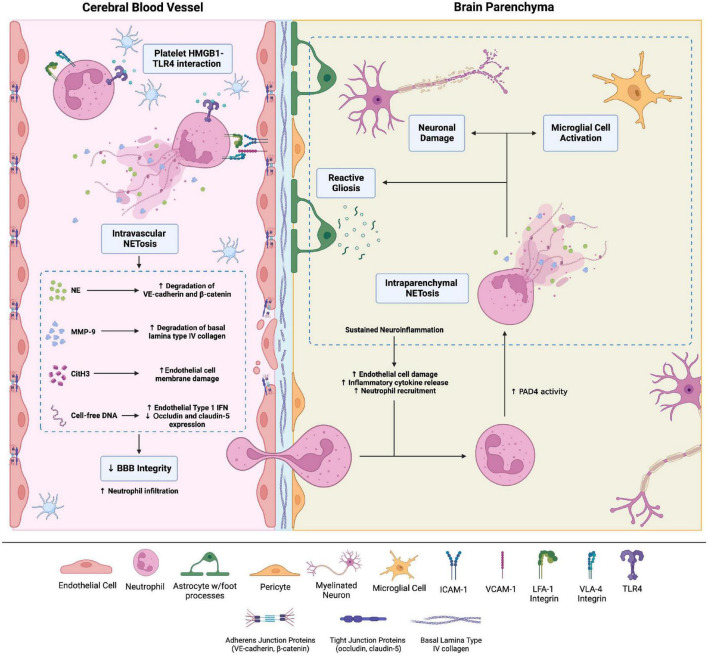FIGURE 2.
Brain injuries of various etiologies cause neutrophil adhesion to the brain microvascular endothelial cells (BMECs) via integrins, namely LFA-1 and VLA-4 integrins, which bind endothelial surface intercellular adhesion molecule-1 (ICAM-1) and vascular cell adhesion molecule 1, respectively. Adhesion to the BMECs activates neutrophils. Neutrophil adhesion to platelet derived high-mobility group box-1 (HMGB1) through toll-like receptor-4 (TLR4) causes neutrophil activation and intravascular neutrophil extracellular trap (NET) production. NETs comprise neutrophil elastase, citrullinated histone H3, matrix metalloproteinases (MMPs), and cell-free DNA. These NET components increase blood-brain barrier (BBB) permeability through a variety of mechanisms. For instance, MMP-9 degrades type IV collagen of the basal lamina of cerebral blood vessels, compromising blood-brain barrier (BBB) integrity. Intraparenchymal neutrophils also undergo NETosis. The ensuing neuronal damage and microglial cell activation amplify neuroinflammation and cause neuronal loss. Created with Biorender.com.

